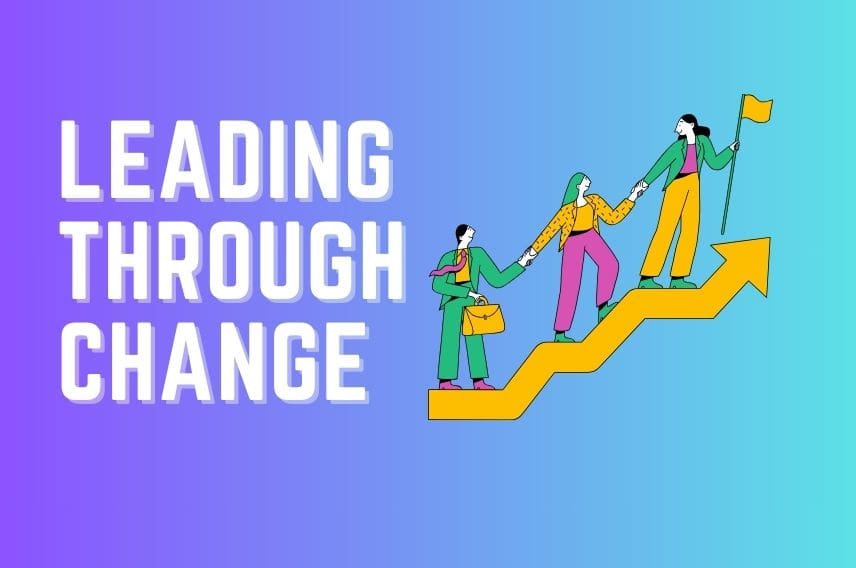In today’s dynamic and ever-changing world, leadership has shifted from a static, dictatorial role to a more fluid and adaptable one. As a leader, navigating the turbulent waters of change requires a critical skillset: the ability to be flexible and adaptable. Today I want to explore the importance of these crucial qualities in effective leadership, offering valuable insights and practical tips for fostering a culture of agility and resilience within your team.
The Imperative of Adaptability
Why is adaptability so crucial for leaders today? The answer lies in the very nature of our world. Change is no longer a rare occurrence; it is the new normal. Technological advancements, market fluctuations, and economic shifts are just a few examples of the constant flux we face. In such a dynamic environment, leaders who cling to rigid structures and outdated methods are destined to fall behind.
Adaptable leaders, on the other hand, have the ability to embrace change as an opportunity, not a threat. They are open to new ideas, willing to experiment, and comfortable adjusting their strategies and approaches as circumstances demand. This flexibility allows them to:
- Respond effectively to unforeseen challenges and opportunities.
- Make informed decisions in the face of uncertainty.
- Motivate and inspire their teams during periods of transition.
- Maintain a competitive edge in a constantly evolving landscape.
Developing Your Adaptability Muscles
Adaptability is not an inherent trait; it is a skill that can be learned and honed. As a leader, there are several concrete steps you can take to cultivate this critical quality:
1. Embrace a Growth Mindset:
- Shift your internal narrative. Instead of phrases like “I’m not good at change,” adopt empowering statements like “Change is an opportunity to learn and grow.”
- Seek feedback actively. Ask colleagues, mentors, and direct reports for honest feedback on how you handle change and embrace suggestions for improvement.
- Focus on progress, not perfection. Celebrate small wins and milestones along the way, recognizing that adaptation is a continuous journey.
- Read books, articles, and blogs on growth mindset and adaptability. Immerse yourself in the mindset of successful leaders who thrive on change.
2. Foster Open Communication:
- Create regular forums for communication: Encourage open dialogues through meetings, team chats, and anonymous surveys.
- Actively listen to your team’s concerns and feedback. Validate their feelings and address their anxieties proactively.
- Be transparent and honest about challenges and uncertainties. Avoid sugar-coating situations and instead provide honest assessments.
- Celebrate open dialogue and reward team members who share their thoughts freely.
3. Empower Your Team:
- Delegate tasks and responsibilities, trusting your team to make decisions and solve problems independently.
- Provide opportunities for your team to take ownership of projects and initiatives.
- Offer training and development programs to equip your team with the skills they need to thrive in a changing environment.
- Recognize and reward individual and team achievements to foster a culture of ownership and accountability.
4. Encourage Experimentation:
- Create a safe space for experimentation and risk-taking. Allocate resources for experimentation and encourage “fail fast” initiatives.
- Promote collaboration and cross-functional teams to facilitate the exchange of ideas and perspectives.
- Celebrate successes and learnings from experiments, even if they don’t lead to the desired outcome.
- Use experimentation as a learning tool, analysing results and adapting strategies based on findings.
5. Learn from Mistakes:
- Develop a “learning from failure” culture. Encourage open discussions about mistakes and identify the root causes without blaming individuals.
- Focus on identifying lessons learned and using failures as opportunities to improve processes and approaches.
- Promote a culture of psychological safety where team members feel comfortable admitting mistakes and seeking support.
- Share your own experiences with failure and how you learned from them to encourage vulnerability and authenticity within the team.
6. Stay Connected:
- Participate in industry conferences, workshops, and networking events.
- Subscribe to industry publications, blogs, and newsletters.
- Connect with thought leaders and other adaptable leaders.
- Seek mentors who can provide guidance and support on navigating change.
7. Build a Strong Support Network:
- Connect with other leaders in your field who share your values and commitment to adaptability.
- Join professional organisations and online communities for leaders.
- Seek mentorship from experienced leaders who can guide you through challenging situations.
- Consider individual coaching or therapy to develop your coping mechanisms and emotional intelligence.
By implementing these strategies, you can create a culture of adaptability within your team, enabling you to navigate change effectively and thrive in a dynamic environment.
Leading the Way
By prioritising adaptability and flexibility, you can become a leader who thrives in the face of continuous change. By cultivating this critical skill set, you will not only navigate the turbulent waters of transformation but also emerge stronger and more resilient on the other side. Remember, the ability to adapt and change is not a weakness; it is the hallmark of a truly effective leader in today’s ever-evolving world.
Call to Action
Start building your adaptability muscle today. Reflect on your own leadership style and identify areas where you can become more flexible and open to change. Share your journey with your team and encourage them to embrace adaptability as well. Remember, fostering a culture of agility and resilience is the key to leading through change and achieving long-term success.
